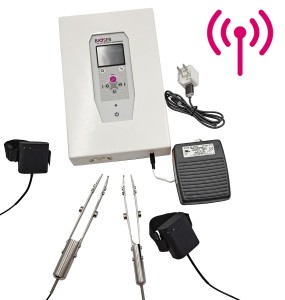Authors
W.-T. Tseng, M.-L. Tsai., K. Iwata., C.-T. Yen.
Lab
National Taiwan University, Taipei, Taiwan.
Journal
The Journal of Neuroscience
Abstract
The transection of the inferior alveolar nerve (IANx) produces allodynia in the whisker pad (V2 division) of rats. Ectopic discharges from injured trigeminal ganglion (TG) neurons and thalamocortical reorganization are possible contributors to the sensitization of uninjured V2 primary and CNS neurons. To test which factor is more important, TG and ventroposterior medial nucleus (VPM) neurons were longitudinally followed before, during, and after IANx for up to 80 d. Spontaneous discharges and mechanical stimulation-evoked responses were recorded in conscious and in anesthetized states. Results show (1) a sequential increase in spontaneous activities, first in the injured TG neurons of the IAN (2–30 d), followed by uninjured V2 ganglion neurons (6–30 d), and then VPM V2 neurons (7–30 d) after IANx; (2) ectopic discharges included burst and regular firing patterns in the IAN and V2 branches of the TG neurons; and (3) the receptive field expanded, the modality shifted, and long-lasting after-discharges occurred only in VPM V2 neurons. All of these changes appeared in the late or maintenance phase (7–30 d) and disappeared during the recovery phase (40–60 d). These observations suggest that ectopic barrages in the injured IAN contribute more to the development of sensitization, whereas the modality shift and evoked after-discharges in the VPM thalamic neurons contribute more to the maintenance phase of allodynia by redirecting tactile information to the cortex as nociceptive.
BIOSEB Instruments Used
Rodent pincher - analgesia meter (BIO-RP-M)
Source :

 Douleur - Allodynie/Hyperalgésie Thermique
Douleur - Allodynie/Hyperalgésie Thermique Douleur - Spontanée - Déficit de Posture
Douleur - Spontanée - Déficit de Posture Douleur - Allodynie/Hyperalgésie Mécanique
Douleur - Allodynie/Hyperalgésie Mécanique Apprentissage/Mémoire - Attention - Addiction
Apprentissage/Mémoire - Attention - Addiction Physiologie & Recherche Respiratoire
Physiologie & Recherche Respiratoire




































 Douleur
Douleur Système Nerveux Central (SNC)
Système Nerveux Central (SNC)  Neurodégénérescence
Neurodégénérescence Système sensoriel
Système sensoriel Système moteur
Système moteur Troubles de l'humeur
Troubles de l'humeur Autres pathologies
Autres pathologies Système musculaire
Système musculaire Articulations
Articulations Métabolisme
Métabolisme Thématiques transversales
Thématiques transversales Congrès & Meetings
Congrès & Meetings 